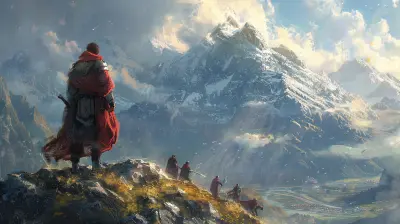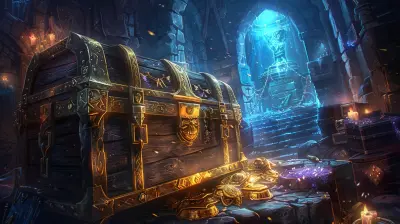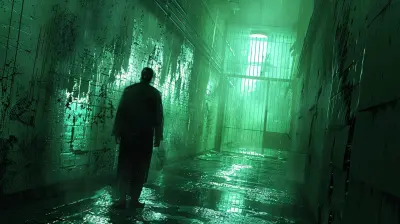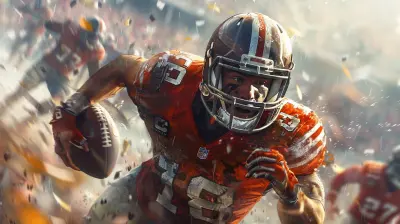How Early Online Games Shaped Today’s Multiplayer Experience
14 June 2025
The gaming world we know today is a far cry from its humble beginnings. But let’s be real—without those early online games, multiplayer gaming wouldn't look anything like it does now. If you've ever spent countless hours battling with friends online, trading items in a virtual world, or debating strategies on Discord, you owe a nod of gratitude to the pioneers. They set the foundation for the immersive, fast-paced, and ridiculously fun experiences we now take for granted. So, how exactly did those early online games pave the way for today’s multiplayer landscape? Let’s dive right in.
The Early Days of Online Multiplayer Gaming
You know the saying, "Rome wasn’t built in a day"? The same goes for multiplayer gaming. Back in the ‘80s and ‘90s, the idea of playing a game with someone across the globe was nothing short of science fiction. We were tethered to local multiplayer setups—huddled around a single screen, fighting over controllers, and yelling at your sibling for looking at your part of the screen (split-screen drama, anyone?).But then came the dawn of online connectivity. Early online games, like MUDs (Multi-User Dungeons), planted the first seeds. These text-based adventures might look laughably primitive today, but they were revolutionary. They connected players in virtual worlds through a network and laid the groundwork for what multiplayer gaming would become.
MUDs: Where It All Started
Let me paint you a picture. Imagine logging into a game where there are no jaw-dropping graphics, no 4K resolution, and no voice chat. Instead, you’re navigating a purely text-based world where you type commands like "go north" or "attack troll." Sounds archaic, right?But MUDs were groundbreaking. They were essentially the first massive multiplayer online games (yep, think of them as the ancient ancestors of World of Warcraft). Players could interact in real-time, form alliances, and explore virtual worlds together. It may have been simple on the surface, but these games sparked the social aspect of gaming—one that's still critically important today.
Dial-Up and LAN Parties: The Struggle Was Real
Before the lightning-fast internet speeds of today, there was dial-up. Oh, what a time to be alive! If you wanted to play online games, you had to deal with the screeching tones of your modem and the inevitable battles with family members who wanted to use the phone. Online gaming wasn’t just a hobby; it was an epic struggle.For those who weren’t keen on dial-up, LAN (Local Area Network) parties were another way to scratch the multiplayer itch. Gamers would lug their bulky CRT monitors and desktop towers to a friend’s house, connecting their computers like some kind of nerdy version of a campfire circle. LAN parties may not have been online in the modern sense, but they fostered the same competitive and cooperative spirit that defines today’s multiplayer games.
A Breakthrough Moment: Online Consoles
When consoles got in on the online action, things started heating up. Remember the Sega Dreamcast? It was ahead of its time, offering online capabilities with its Phantasy Star Online game. While it wasn’t exactly mainstream, it proved that online gaming had potential beyond the PC market.And then came the behemoths—Microsoft and Sony. The Xbox Live service, released in 2002, changed the game (pun absolutely intended). For the first time, console players had a unified online ecosystem. You could shoot your friends in Halo 2 without leaving your couch! Gamers suddenly had leaderboards, voice chat, matchmaking, and downloadable content all at their fingertips. It was like opening Pandora’s box (but, you know, in a good way).
MMO Games: The Birth of Massive Communities
If MUDs birthed the multiplayer experience, MMORPGs (Massively Multiplayer Online Role-Playing Games) took it to the next level. Games like EverQuest, Ultima Online, and later World of Warcraft turned the gaming world upside down. These weren’t just games—they were living, breathing worlds filled with real people.In MMOs, you weren’t just a player—you were part of a community. You could team up with strangers to take on epic raids, trade goods in bustling marketplaces, or just hang out and chat. It was like a second life (no pun intended, Second Life fans). These games showed us the potential of connecting hundreds, even thousands, of players in one massive space.
The Evolution of Esports and Competitive Play
Early online games also gave rise to a competitive spirit that’s now a core part of modern gaming. Games like StarCraft and Quake laid the foundation for what would eventually become esports. Back then, tournaments were held in small venues or even basements. Fast forward to today, and esports events fill stadiums, with millions of dollars at stake. Talk about a glow-up!The competitive elements introduced in those early games—leaderboards, rankings, and balancing—are still present in today’s hits like League of Legends, Fortnite, and Valorant. Without those early experiments, we wouldn’t have the finely tuned competitive gaming ecosystems we enjoy now.
Social Features: Gaming as a Community
Let’s not forget the unsung hero of online games: social interaction. Back in those early days, chatting with other players via text or clunky voice systems wasn’t just a feature—it was a revelation. For the first time, games became a way to connect. You weren’t just playing against faceless opponents; you were building friendships, rivalries, and communities.Today, social features are baked into nearly every multiplayer game. Whether it’s party systems, built-in voice chat, or integrated streaming support, the goal is the same: to keep us connected. And thanks to the groundwork laid by those early games, many of us have forged lifelong friendships that started with a simple GG (“Good Game”).
How Technology Changed the Game
Of course, all of this wouldn’t have been possible without advancements in technology. Early online games struggled with lag, poor graphics, and limited connectivity. But as internet speeds improved and game engines became more sophisticated, the possibilities expanded.Games like Counter-Strike introduced dedicated servers, making gameplay smoother and more reliable. Peer-to-peer networking allowed for larger-scale games, and eventually, cloud gaming brought us closer to seamless, lag-free experiences. The tech behind the games might seem invisible to us now, but it’s the backbone of every multiplayer match.
The Lasting Impact of Early Online Games
So, what does all of this mean for the multiplayer games we love today? Put simply, the early days of online gaming built the foundation. They gave us the tools, the systems, and the culture that make modern games so enjoyable.Think about it. Without those text-based MUDs, would we have massive online games like Final Fantasy XIV? Without LAN parties, would esports be the juggernaut it is now? Without the innovations in social features, would gaming communities like those on Twitch, Reddit, or Discord even exist?
These early games didn’t just shape multiplayer gaming—they shaped how we connect, compete, and collaborate as gamers. And that’s pretty darn cool.
Wrapping It All Up
The evolution from the early days of MUDs and LAN parties to the modern multiplayer systems we enjoy today is nothing short of extraordinary. Every time you log into a game, join a party with friends, or climb the ranks in a competitive match, you’re experiencing the legacy of those trailblazing early online games.So next time you’re in the middle of a heated online match or just chilling in a virtual world with your squad, take a moment to appreciate how far we’ve come. It’s been a wild ride, and honestly? It’s only going to get better from here.
all images in this post were generated using AI tools
Category:
Gaming HistoryAuthor:

Madeleine McCaffrey
Discussion
rate this article
3 comments
Tank Nguyen
Ah, the nostalgia! Back when "multiplayer" meant gathering around a single screen, fueled by potato chips and friendly rivalries. Early online games laid the foundation for today’s epic virtual battles, reminding us that teamwork (and a little bit of trash talk) makes the dream work! Game on! 🎮✨
June 16, 2025 at 3:01 AM

Madeleine McCaffrey
Absolutely! Those cozy couch co-op sessions truly laid the groundwork for the rich multiplayer experiences we enjoy today. Cheers to nostalgia and the evolution of gaming! 🎮✨
Heidi McFarland
From pixelated chaos to epic raids, nostalgia levels: maxed!
June 15, 2025 at 3:53 PM

Madeleine McCaffrey
Absolutely! It's incredible how those pixelated adventures laid the groundwork for the immersive multiplayer experiences we enjoy today. Nostalgia truly runs deep!
Stephen Wilson
Exploring the roots of early online games is a reminder of how far we've come! These pioneers laid the groundwork for the vibrant multiplayer experiences we cherish today. Every match, every friendship formed, echoes their legacy, inspiring us to connect and play together like never before!
June 14, 2025 at 3:55 PM

Madeleine McCaffrey
Absolutely! Those early games were pivotal in shaping the multiplayer experiences we enjoy today, fostering connections that continue to thrive in our gaming communities.



